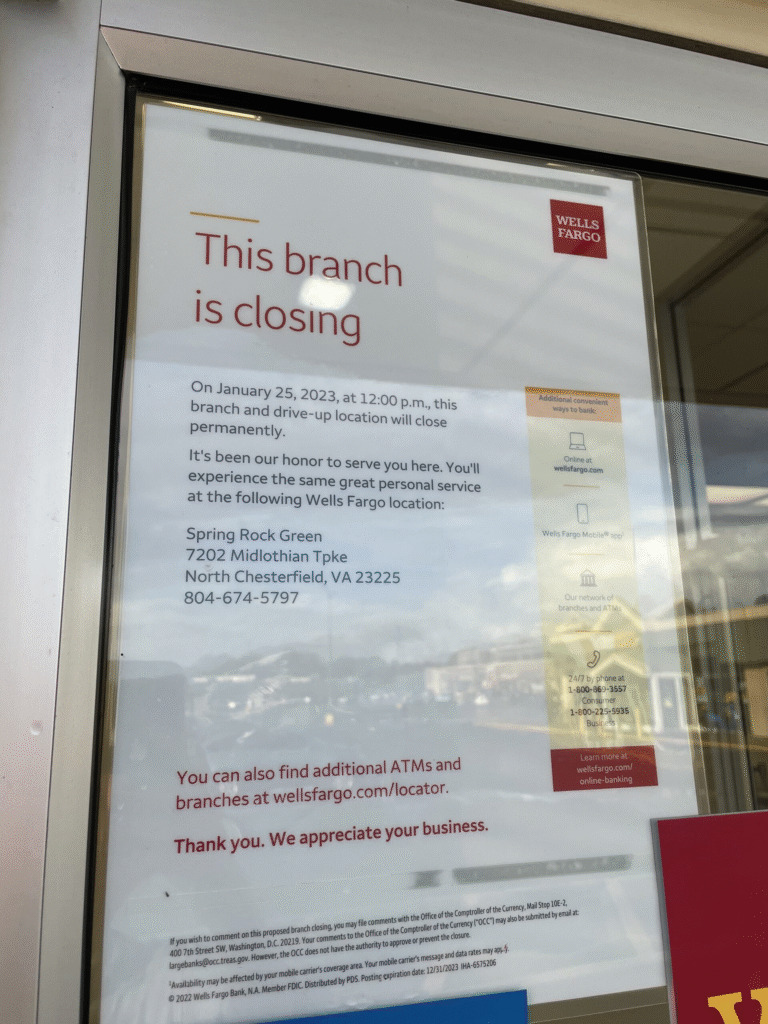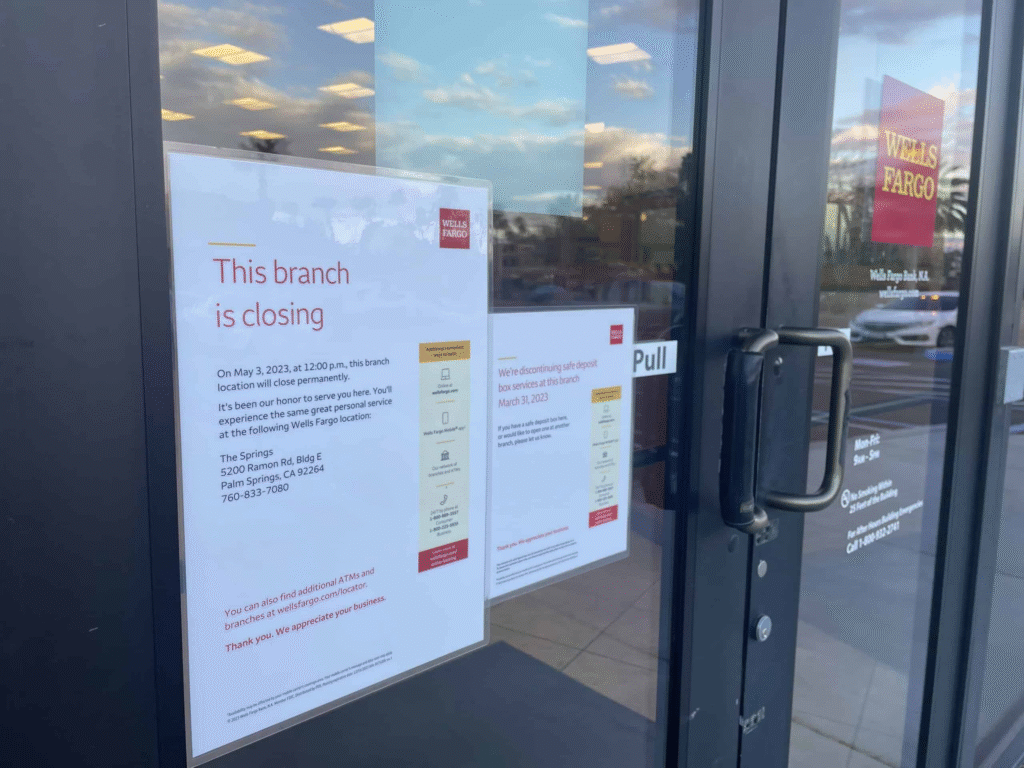Introduction
Wells Fargo, one of the largest banks in the U.S., has been implementing branch closures, downsizing certain operations, and consolidating its infrastructure as customer behavior shifts toward digital banking. This article explores the latest developments, reasons behind these moves, and what customers should expect.

Recent Branch Closure Examples
- In Leesburg, Florida, Wells Fargo announced a branch closure: the location at 400 W North Boulevard will shut down on October 22, 2025 at 11:00 a.m. ET. The ATM at that site will remain operational.
- Other branches around the U.S. have also been earmarked for closure or consolidation in recent years, as part of the bank’s strategy to streamline its physical footprint.
- In Oregon, the bank is trimming staff and closing office locations in Salem, Hillsboro, and Portland by end of 2025, affecting hundreds of employees. (opb)

Why Is Wells Fargo Closing Branches?
Here are some of the main reasons behind this trend:
1. Digital Banking Adoption
More customers are doing their banking via mobile apps, online platforms, and ATMs rather than in branch offices. The pandemic accelerated this shift.
As a result, physical branch transactions have declined, making some locations unprofitable.
2. Cost & Efficiency Focus
Maintaining a large branch network is expensive. Closing underused branches allows Wells Fargo to reduce real estate and staffing costs.
The bank is also reallocating resources to strengthen digital and compliance infrastructure..

3. Regulatory Reforms & Strategic Realignment
Wells Fargo has been under regulatory oversight for missteps in past years:
- In 2025, the bank secured the termination of two longstanding Federal Reserve consent orders from 2011, related to mortgage servicing and legacy businesses. (newsroom.wf.com)
- It also confirmed removal of limits on the growth of total assets, imposed in 2018, after meeting the conditions set by regulators. (newsroom.wf.com)
- Analysts see these regulatory improvements as enabling the bank to refocus growth rather than remain constrained. (Reuters)
As the bank transforms internally and restores regulatory trust, it may shift further emphasis from brick‑and‑mortar presence to more scalable, digital infrastructure.
4. Realignment of Workforce & Operations
In addition to branch closures, Wells Fargo is also cutting staff in back‑office, operations, and noncustomer‑facing roles, especially in regions where it consolidates operations. (opb)
Impact on Customers & What You Should Do
What Customers Might Notice
- The branch you visit often may be closed or relocated.
- ATM services may remain operational at closed branch sites, but other services (e.g. in‑person assistance, safe deposit boxes) may move.
- Increased reliance on digital banking (mobile app, web) for everyday tasks.
- Possible migration of customer load to neighboring branches, potentially increasing wait times.
What You Should Do
- Check your branch status: Before visiting, use Wells Fargo’s branch locator or call ahead.
- Move to digital banking: Familiarize yourself with their mobile or web app features (check deposits, transfers, bill pay).
- Know alternative branches: When your branch closes, identify the nearest branch that remains open.
- Watch for notices: Wells Fargo typically posts closure notices in advance and provides instructions about redirecting services.
- Save records: Make digital or physical copies of important statements or documents stored at branch offices beforehand.
Broader Trend: Bank Branch Closures Across the U.S.
- In 2021, U.S. banks collectively shut down nearly 2,927 branches, the highest on record. Wells Fargo led in net closures (closing about 267 branches). (CNBC)
- As of October 2023, Wells Fargo was again among the top branch-closers in that month, shuttering 30 locations. (S&P Global)
- The ongoing trend suggests many banks will continue to redefine the role of physical branches in future banking ecosystems.
Conclusion
Wells Fargo’s branch closures reflect a broader shift in consumer behavior, cost pressures, and regulatory realignment. While some closures are localized, together they signal that even major banks are transforming their physical presence in favor of digital and hybrid models. For customers, staying informed and adapting to digital tools will be key.



